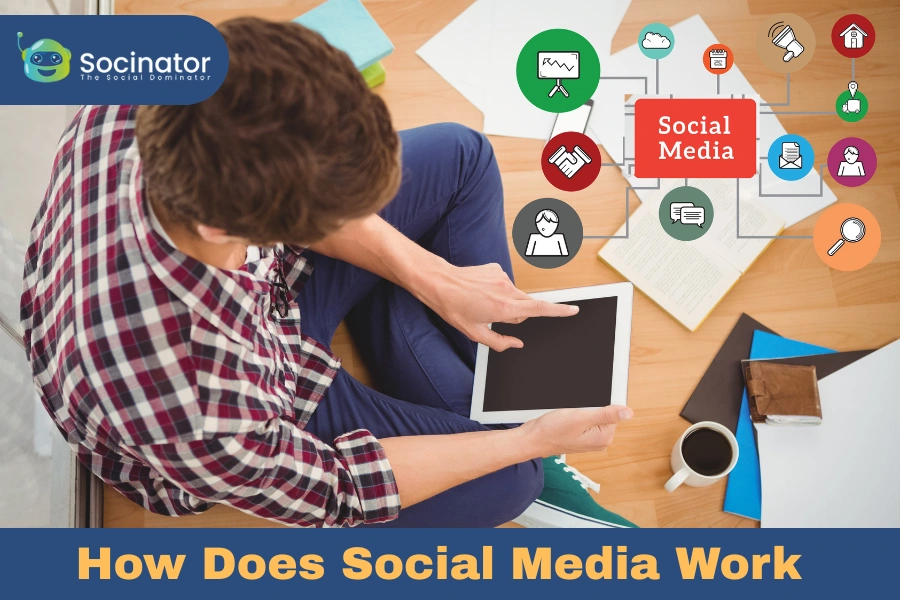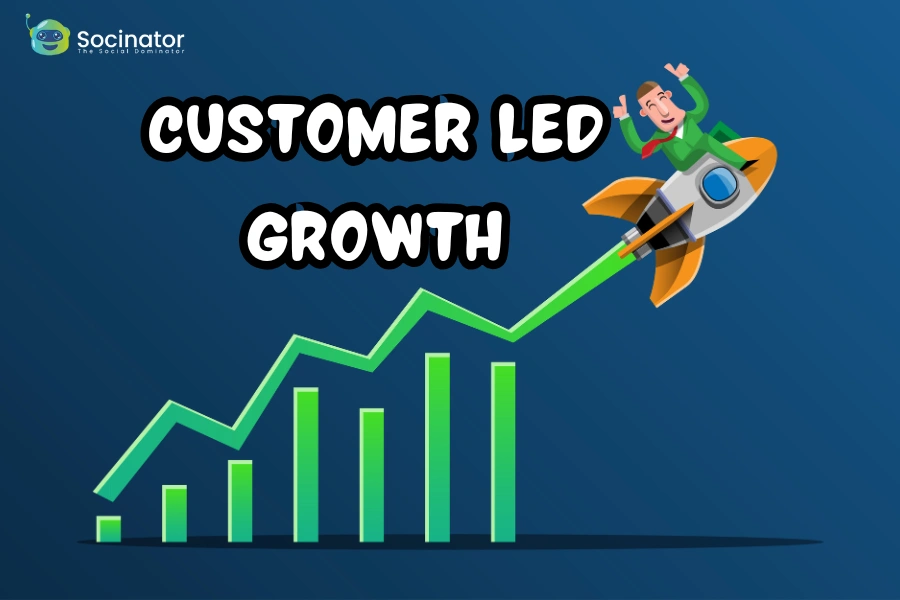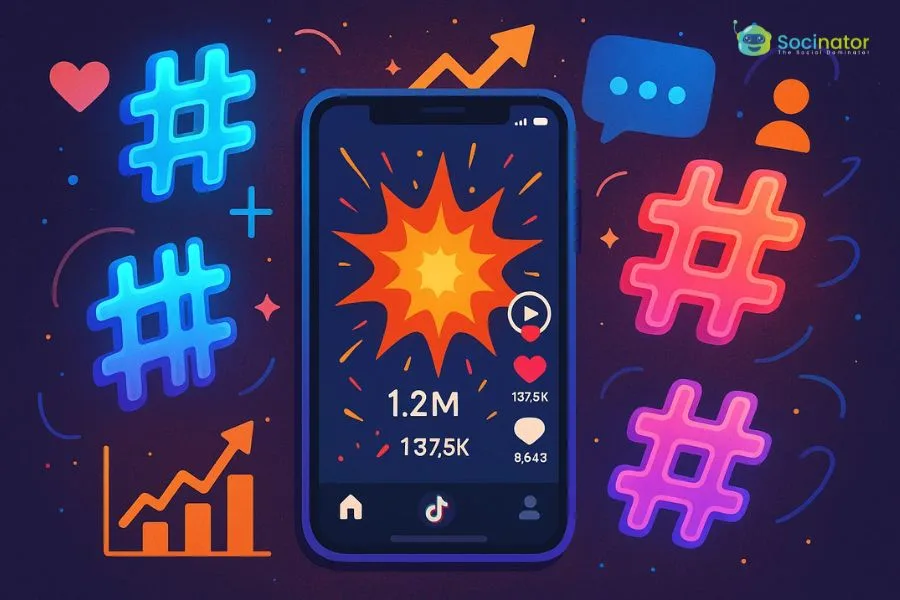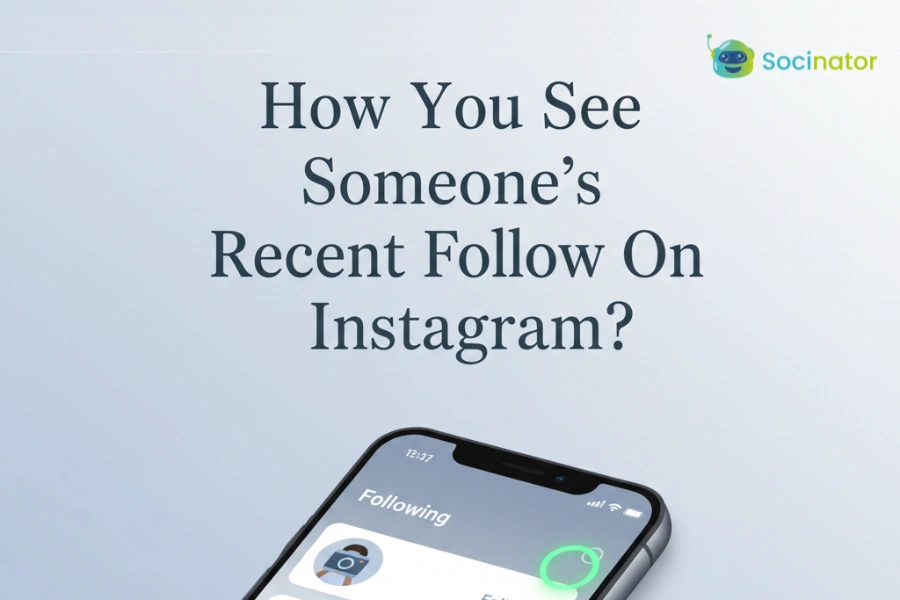Remember when social media was just about staying in touch with friends? Those days are long gone. In 2025, it’s a whole different game. Ask anyone today- how does social media work, and you’ll quickly realize it’s no longer a simple answer.
Behind every scroll, like, and comment, there’s an AI watching, learning, and tailoring your feed to keep you hooked. From Instagram and TikTok to LinkedIn, the content isn’t random; it’s precision-engineered to grab your attention. And just when you think you’ve figured it out, the rules change again.
To truly understand how these platforms function today, it’s essential to look beyond the surface. This blog explores how new algorithms influence visibility, how platforms are evolving, and what it all means for everyday users, creators, and brands trying to stay relevant in a hyper-personalized digital world.
Hit ‘Play’ Button & Tune Into The Blog!
What Social Media Really Means In The Algorithm Age?
 In 2025, understanding how does social media work means recognizing it as far more than just a digital space for sharing updates or connecting with friends. Today’s platforms are intelligent ecosystems powered by algorithms, behavioral analytics, and predictive AI. Every scroll, click, like, and comment feeds into a real-time feedback loop that shapes what appears on your feed. It’s no longer only about who you follow, it’s about how you engage.
In 2025, understanding how does social media work means recognizing it as far more than just a digital space for sharing updates or connecting with friends. Today’s platforms are intelligent ecosystems powered by algorithms, behavioral analytics, and predictive AI. Every scroll, click, like, and comment feeds into a real-time feedback loop that shapes what appears on your feed. It’s no longer only about who you follow, it’s about how you engage.
This algorithm-driven evolution has turned social platforms into dynamic engines of engagement, personalization, and content delivery. Whether you’re a casual user, a content creator, or a business, your visibility now depends on how well you match the algorithm’s evolving signals. Staying informed about how does social media work, and understanding how your actions influence what gets seen, has become essential for growing, connecting, and thriving online.
How Does Social Media Work Technically?
 If you’re wondering how does social media work from a technical standpoint, it’s all about data exchange, cloud-based infrastructure, and algorithmic processing.
If you’re wondering how does social media work from a technical standpoint, it’s all about data exchange, cloud-based infrastructure, and algorithmic processing.
Here’s a simplified overview of the technical elements:
User Data Input:
Each time you sign up, scroll, like, comment, or share content, you’re contributing valuable data to the platform. This information helps platforms understand your interests and behavior patterns.
Databases:
How does social media work when it comes to managing billions of user interactions? A big part of the answer lies in databases. Social media platforms store all user activity, like preferences, interactions, and friend connections in massive databases. These databases allow quick access to personalized information in real time, making the user experience seamless and highly responsive.
Algorithms:
Algorithms are smart programs that analyze your behavior to decide which posts, ads, or videos you see. They favor content that is most likely to capture your interest, based on your previous activity.
Cloud Computing:
Cloud technology powers the instant delivery of content to users across the world. It allows platforms to scale easily and serve millions of people with speed and efficiency.
Behind every comment or share lies an intricate web of backend servers, AI models, and data-driven decisions that help determine what you see and when.
Knowing how does social media work technically gives deeper insight into how content is curated and delivered to your feed
What Are Some Examples Of Social Media Platforms?
 When we ask, how does social media work, it’s important to look at the key players shaping the space. Each platform has its unique features, yet they follow the same basic model: user-generated content + social engagement.
When we ask, how does social media work, it’s important to look at the key players shaping the space. Each platform has its unique features, yet they follow the same basic model: user-generated content + social engagement.
Popular Social Media Platforms:
Facebook:
Facebook was one of the first platforms to bring global communities together online. It allows users to share updates, join groups, and build social connections with friends and family.
Instagram:
Instagram emphasizes visual storytelling through photos, Reels, and Stories. It’s widely used by creators, brands, and influencers for aesthetic content and engagement.
Twitter (now X):
Twitter, rebranded as X, is a hub for real-time updates, trending news, and public conversations. It’s a go-to space for quick thoughts, debates, and breaking news.
LinkedIn:
LinkedIn is designed for professional networking, career growth, and B2B engagement. It connects employers, job seekers, and industry leaders through content, resumes, and business updates. To understand how does social media work in a professional setting, LinkedIn is a prime example of how platforms tailor features to specific user goals while maintaining core engagement principles.
TikTok:
TikTok excels at delivering short, engaging videos tailored to each user by a powerful algorithm. It’s popular for trends, challenges, and creative content across all age groups.
Snapchat:
Snapchat centers around disappearing messages, private snaps, and augmented reality filters. It’s built for one-on-one communication and fun, informal interactions.
YouTube:
YouTube is a leading video-sharing platform that also offers social features like comments, likes, and community posts. It supports long-form and short-form content for creators and audiences alike.
While each platform has its features, the core experience is shaped by intelligent content delivery. Understanding how does algorithm work on social media helps explain why certain posts go viral while others don’t.
Also Read:
7 User Generated Content Platform You Should Know About
Every platform offers a different experience, but fundamentally, They all operate based on user behavior, content algorithms, and engagement metrics. This consistency across platforms highlights the common foundation of how does social media work.
How Does The Algorithm Work On Social Media?
Social media algorithms are designed to keep you engaged by personalizing the content feed. If you’ve ever wondered how does social media algorithm work, the answer lies in their ability to analyze and learn from your behavior to deliver content that feels tailor-made.
These AI-driven engines analyze your:
- Scroll patterns
- Likes and comments
- Watch time
- Click-through rates
- Interaction with specific users or topics
In 2025, how does social media algorithm work depends on real-time engagement signals like watch time, saves, shares, and even how long you hover over a post. The more your content aligns with user behavior, the more likely it is to appear in their feed, even if they don’t follow you.
Based on this data, the algorithm predicts what content you’re most likely to enjoy or interact with and prioritizes it in your feed. This personalized curation is a core part of how does social media work, explaining why you often see posts from people you engage with the most or videos similar to ones you previously watched.
Algorithms vary by platform, but their ultimate goal is to maximize user engagement, retention, and ad visibility.
Also Read:
Social Media Algorithm: A Guide to the Future of Networking
How Human Psychology Shapes Social Media Behavior?
While understanding how does social media work from a technical angle is vital, the psychology behind it is equally fascinating.
Social media taps into deep human instincts:
The Need for Belonging:
Likes, comments, and shares act as digital affirmations, making users feel seen and accepted. This taps into our deep-rooted desire for social validation and connection.
Curiosity and FOMO:
The endless scroll feeds our natural curiosity and fear of missing out on trends, news, or social updates. It keeps users engaged by offering something new every time they refresh.
Reward Loops:
Every notification or share gives a small hit of dopamine, reinforcing the behavior. Over time, this creates a habit loop that keeps users coming back for more.
Tribalism:
People naturally gravitate toward communities and influencers that reflect their values. Social media amplifies this by enabling users to find and engage with like-minded groups instantly.
These psychological levers are so strong that they keep billions of users returning daily. Platforms leverage behavioral science to design interfaces that are addictive by nature.Knowing how does social media work on a psychological level allows creators and brands to connect more meaningfully.
How Does Social Media Marketing Work?
 These days, it’s not just about grabbing attention, brands are focused on building genuine relationships with their audience through social media.
These days, it’s not just about grabbing attention, brands are focused on building genuine relationships with their audience through social media.
At its core, social media marketing involves leveraging platforms to:
- Build Brand Awareness
- Engage with Audiences
- Drive Traffic
- Generate Leads or Sales
To achieve this, marketers create and share content that speaks directly to their target audience’s interests and behaviors. Regardless of it’s an eye-catching video, a relatable meme, or an informative post, the goal is to spark engagement and keep the brand top of mind. Data plays a key role; marketers rely on performance metrics and audience insights to fine-tune their messaging, visuals, and timing for better impact.
Paid advertising is another crucial element. With advanced targeting tools, brands can zero in on specific demographics based on age, location, interests, or online activity. This precision reflects how does social media work to maximize efficiency, by ensuring less wasted budget and a higher chance of reaching people who care about the product or service.
What makes social media marketing truly powerful is the ability to combine creative storytelling with real-time, measurable results. Unlike traditional ads on TV or print, every post and campaign on social media can be tracked, including clicks, shares, likes, conversions, all in real time. This allows brands to see what’s working, make quick adjustments, and continuously improve their strategy.
Whether it’s a local shop or a global brand, social media marketing offers the tools to connect, grow, and succeed by meeting audiences where they already spend their time, online. That’s the practical side of how does social media work to drive business success.
How Brands Win With Social Media?
Brands that understand how does social media work can use it as a powerful growth engine.
Here’s how winning brands use it:
Build Communities:
Brands that engage meaningfully with their audience create a sense of belonging. This fosters trust, loyalty, and long-term relationships beyond just transactions.
Tell Stories:
Using visuals, short videos, and user-generated content, brands bring their message to life. Storytelling helps humanize the brand and connect emotionally with audiences.
Leverage Influencers:
Partnering with trusted creators allows brands to tap into established communities. Influencers help deliver authentic endorsements that feel more personal and relatable.
Use Data:
Successful brands don’t guess; they analyze performance metrics, trends, and audience feedback. This helps them refine content, improve timing, and optimize strategies.
Offer Customer Service:
Social media is now a go-to channel for support, with many brands handling queries via direct messages. Fast, helpful responses boost satisfaction and build brand credibility.
With the right tactics, how does social media work to not just build visibility but also improve conversions and brand loyalty becomes clear.
Also Read:
Types Of Social Media Marketing You Need To Try Now
How Can You Make Social Media Work For You?
 If you’re still wondering how does social media work for individuals or small businesses, here are actionable steps:
If you’re still wondering how does social media work for individuals or small businesses, here are actionable steps:
Set Clear Goals:
Before you start posting, decide what you want to achieve, whether it’s building awareness, generating leads, or offering customer support. Clear goals guide your content and measure your success.
Choose the Right Platforms:
Not every platform suits every business. Focus your efforts on the channels where your audience is most active to avoid spreading yourself too thin.
Create Valuable Content:
Offer content that educates, entertains, or inspires your audience rather than just selling. Content that delivers value fosters trust and encourages people to return.
Engage Authentically:
Social media is a two-way street; respond to comments, ask questions, and show personality. Genuine interactions make your brand more relatable and human.
Leverage Tools:
Use a reliable social media automation tool like Socinator to simplify scheduling, manage multiple accounts, and gain insights from detailed analytics. It helps save time, stay consistent, and grow without the manual hassle.
Stay Updated:
Social media algorithms and trends shift frequently. Keep learning and adapting your strategy to stay relevant and ahead of the curve.
With intention and the right tools, anyone can harness the power of how does social media work to build their presence, drive engagement, and grow their impact.
Why Socinator Is The Smart Choice For Social Media Automation?
 If you’re serious about streamlining your social media marketing in 2025, Socinator is a tool you can’t afford to overlook. This powerful social media management software combines automation, analytics, and scheduling in one platform, designed for individuals, marketers, and businesses alike.
If you’re serious about streamlining your social media marketing in 2025, Socinator is a tool you can’t afford to overlook. This powerful social media management software combines automation, analytics, and scheduling in one platform, designed for individuals, marketers, and businesses alike.
With access to 9+ platforms in one place, it simplifies complex workflows and helps users focus more on strategy and engagement rather than repetitive tasks.
What Makes Socinator Stand Out?
Social Media Scheduling:
With Socinator, you can plan, collaborate, and schedule your posts ahead of time using a clean and intuitive interface. This helps ensure consistent posting without the need to be online 24/7.
Content Management:
Easily organize your content across platforms with streamlined workflows and a centralized dashboard. This boosts efficiency and keeps your messaging aligned across all channels.
Analytics and Insights:
Track detailed metrics like reach, engagement, and conversions to understand what’s working. Use these insights to optimize your campaigns and make smarter content decisions.
Automation Tools:
Save hours of manual work by automating tasks like liking, following, commenting, and posting. Socinator helps grow your social presence effortlessly while keeping interactions active.
Account Security:
With built-in protection features, Socinator ensures your accounts stay safe during automated actions. You can confidently manage multiple profiles without risking platform bans or breaches.
Even if you’re managing a small business or scaling up a large brand, Socinator helps you make the most of how does social media work in today’s dynamic digital sphere.
Conclusion
Social media isn’t just a place to scroll anymore; it’s where people connect, share, shop, and engage. From understanding the tech behind it to the psychology that keeps us hooked, knowing how social media works gives you the power to use it more effectively. Whether you’re building a brand, managing a business, or simply trying to stay relevant, the right approach makes all the difference.
And if you’re looking to simplify and strengthen your strategy, Socinator is the tool to help you get there. With powerful automation, scheduling, and analytics features, it takes the heavy lifting out of social media management, so you can focus on what truly matters: growing your presence and connecting with your audience.
In 2025 and beyond, staying ahead in the social space means working smarter. Start with the right tools, stay consistent, and success will follow.
FAQs
1. What potential risks do businesses face when using social media?
Ans. While social media offers massive opportunities, it also comes with risks such as negative reviews, data privacy concerns, and brand misrepresentation. Without proper monitoring and a clear content strategy, businesses may face backlash or lose trust among their audience.
2. How often should a business post on social media?
Ans. There’s no one-size-fits-all rule, but consistency is key. Most experts recommend posting at least 3–5 times per week, depending on the platform and audience. It’s important to balance quality and frequency to maintain engagement without overwhelming followers.
3. Can social media help with SEO?
Ans. Yes, social media indirectly boosts SEO by generating traffic, enhancing brand visibility, and promoting content sharing. While social signals aren’t direct ranking factors, the increased exposure and engagement can positively impact your website’s search performance.






